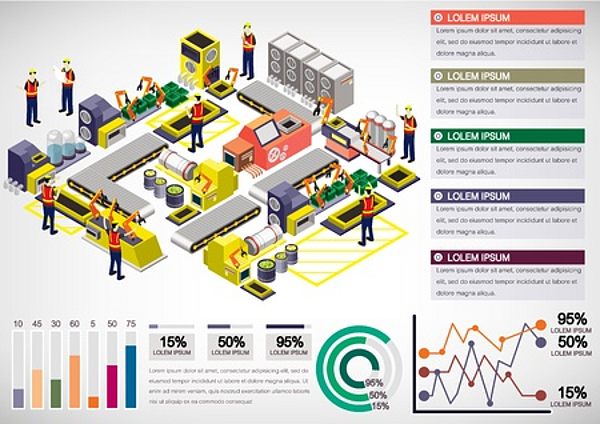Simulation and Analysis of Production Systems
Simulation and Analysis of Production Systems

Learning outcomes
After the successful completion of this course, the students will
- be familiar with the theoretical and methodological principles of discrete event simulation,
- know how and under what conditions dynamic stochastic systems can be represented using analytical queueing models, and
- be qualified to employ simulation and queueing approaches in the modelling and analysis of industrial production systems under uncertainty.
Contents
Chapter 1: Basic concepts
1.1 Production systems
1.2 Simulation
1.3 Queueing models
Chapter 2: Discrete event simulation
2.1 Time-flow mechanisms
2.2 Input analysis
2.3 Generation of random numbers
2.4 Output analysis
2.5 Variance-reducing methods
2.6 Simulation of production systems
Chapter 3: Queueing models
3.1 Markov chains
3.2 Poisson processes
3.3 Markov processes
3.4 Single queueing nodes
3.5 Queueing networks
3.6 Analysis of production systems
Literature
- Altiok T (1997): Performance Analysis of Manufacturing Systems. Springer, Berlin
- Buzacott JA, Shantikumar JG (1993): Stochastic Models of Manufacturing Systems. Prentice Hall, Englewood Cliffs
- Curry GL, Feldman RM (2011): Manufacturing Systems Modeling and Analysis. Springer, Berlin
- Fishman, GS (2001): Discrete-Event Simulation: Modeling, Programming, and Analysis. Springer, Berlin
- Shortle JF, Thompson JM, Gross D, Harris CM (2018): Fundamentals of Queueing Theory. John Wiley, Hoboken
- Ripley, BD (1987): Stochastic Simulation. John Wiley, New York
- Waldmann K-H, Helm WE (2016): Simulation stochastischer Systeme. Springer Gabler Berlin
- Waldmann K-H, Stocker U (2012): Stochastische Modelle. Springer, Berlin
![[Translate to English:] [Translate to English:]](/fileadmin/_processed_/2/5/csm_DJI_0107-HDR_bear_5e97ef9396.jpg)